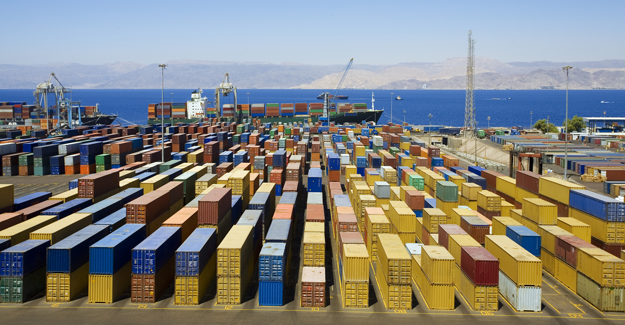India's Fabric Imports Slow Down
India's Fabric Imports Slow Down

India's imports of cotton woven fabrics has been declining over the years. Cotton woven fabric imports during 2016-17 (provisional) at US$ 133.46 million, is 18% lower than in the previous year. Imports especially fell significantly from 2014-15. In that year, imports at US$ 189 million were 28.71% lower than in the previous year. In 2015-16, imports were to the tune of US$ 163.19 million.
Hundred percent cotton fabric accounts for over 50% of total cotton fabric imports. However, its share in total cotton fabric imports has been falling steadily from over 65% in 2012-13. Heavy cotton fabrics including denims, twills, etc account for the second largest share of over 32% in cotton fabric imports.
The share of these fabrics has increased over the years from 23-28% to the current level. In this category, denim fabric imports account for a share of 37.8%. However, imports have shown an annual drop since 2013-14, when imports were around US$ 22.5 million. In 2015-16, denim fabric imports amounted to US$ 18.91 million. And in 2016-17, April-Jan, imports were worth US$ 13.57 million.
India is among the largest producers of denim in the world. And Indian manufacturers have been improving their portfolio of denim fabrics, reducing the need for imports.
MMF fabric imports fall
Imports of MMF fabrics in 2016-17 are also down 10.55% to US$ 173.80 million, according to estimates. Imports of MMF fabrics, in the last few years had shown a significant increase.
For instance, in 2013-14, imports at US$ 167.15 million were 14.38% higher than in the previous year. Similarly, in 2014-15, imports at US$ 198.85 million went up by almost 19%. However, in 2015-16, imports were slightly down 2.28% to US$ 194.30 million. And in 2016-17, according to provisional figures, imports could be down 10.55%.
China remains the largest exporter of MMF fabrics to India, accounting for a share of almost 73%. In cotton fabrics, China's share in India's imports is 65%.
India's fabric demand slows down
India's fabric production has also slackened a bit in the last few months. During April-January 2016-17 MMF fabric production at 12118 msqm was 5.79% lower than in the previous year's period. This clearly reflects lower demand for the fabric in the country. As we can guess, lower exports of apparel and a slack domestic retail market could be the two main reasons for the drop in fabric consumption.
At present, MMF fabric imports account for just over 5% of the domestic production. Weavers are apprehensive that a weak dollar could result in higher imports, also considering that domestic manufacturers are usually unable to supply to the garment exporters in a timely manner.
However, one needs to look at how apparel exports are expected to fare. As we discuss in detail in the later sections of this issue, the consumer market in US and Europe are going through a downturn, a number of large retailers are closing down. This will have an impact on India's apparel exports, and thus demand for fabric. Moreover, India's production and exports are heavily skewed towards cotton.
In this scenario, one wonders if the government's thinking of imposing countervailing duty or other protective measures against fabric imports could help the situation. It may be recalled that some weeks ago, India's Minister of State for Textiles Ajay Tamta had directed the textile commissioner's office to gather data from ports all across the country about the volume of fabrics being imported from China. He stated that this move would allow the Indian government to decide on an appropriate duty structure for such imports.
The ministry's decision to examine fabric imports follows reports that undervalued imports from China have paralysed Surat's MMF industry. It has been widely reported that around 50% of powerlooms in the cluster are running at 50-70% capacity. However, low capacity utilisation was also a result of the government's demonetisation drive, which had brought to a standstill the cash transactions and trade in the industry.



 textileexcellence
textileexcellence 







